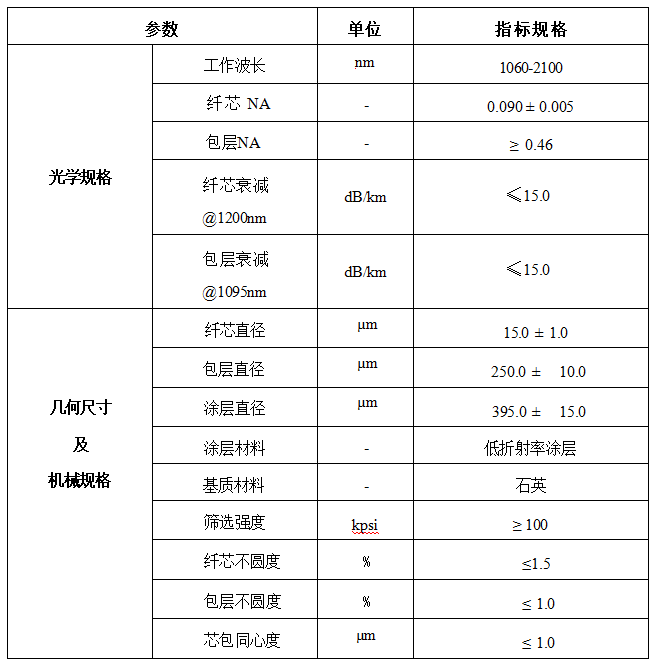
Ⅰ. Breaking Tradition and Leading Innovation
Passive photosensitive optical fiber, with its unique photosensitive properties, enables precise regulation of refractive index under ultraviolet light irradiation, making it a core material for optical fiber communication, sensing, and optical device manufacturing! The newly launched passive photosensitive optical fiber by Changjin Photonics breaks through traditional limitations with innovative technologies, providing excellent solutions for high-end applications.
Ⅱ. Powerful Performance and Full Advantages
The 15/250 µm passive photosensitive optical fiber launched by Changjin Photonics:
1.High photosensitive performance, eliminating the need for hydrogen-loading processing;
2.Low background loss for superior transmission efficiency.
Core Parameters:

Ⅲ. Wide Applications and Broad Prospects
1.Fiber Bragg Grating (FBG):
Telecommunications: Used as wavelength-selective filters, dispersion compensators, laser wavelength stabilizers, etc.
Sensing: Measures strain, temperature, pressure, etc. (The reflection wavelength of FBG shifts with changes in external conditions).
.png)
2. Photosensitive Fiber Bragg Gratings in Distributed Fiber Sensing
By leveraging the refractive index change characteristics of photosensitive optical fiber-prepared distributed grating sensors, long-distance and high-precision environmental monitoring is achieved (e.g., pipeline leakage, bridge structural health monitoring).
.png)
3. Photosensitive Fiber Bragg Gratings in Integrated Optical Devices
Fabricating multifunctional optical waveguides, couplers, beam splitters, and other integrated fiber Bragg grating-based miniature optical components.
.png)
4. Photosensitive Fiber Bragg Gratings in Lasers and Amplifiers
Used for fabricating resonant cavities in fiber lasers or fiber Bragg grating devices employed in gain media (such as erbium-doped fiber amplifiers).
Ⅳ. Why Choose Changjin Photonics
Environmental Tolerance: Stable operation in extreme environments (high pressure, high temperature, high humidity, strong magnetism);
Low Connection Loss: High core/cladding concentricity and batch consistency;
Flexible Customization: Supports customization of numerical aperture (NA), doping concentration, and scenario-specific solutions.